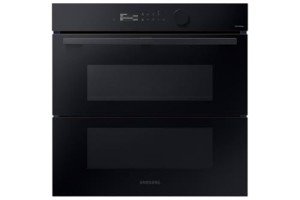Understanding Self-Cleaning Oven Technology: A Comprehensive Guide
Cooking can typically lead to a messy kitchen area, and ovens are notorious for collecting spills, leaks, and burnt-on food. Traditional cleaning approaches can be labor-intensive and lengthy, which is why self-cleaning ovens have become a popular option. This article delves into the technology behind self-cleaning ovens, the different types available, how they work, their advantages and disadvantages, and answers to frequently asked questions.
What is Self-Cleaning Oven Technology?
Self-cleaning ovens are cooking area home appliances specifically created to clean themselves through high heat or specific cleaning modes. The primary purpose of this technology is to streamline the upkeep of an oven while ensuring it operates effectively and securely.
Types of Self-Cleaning Ovens
There are mostly two main kinds of self-cleaning ovens: Pyrolytic Cleaning and Steam Cleaning. Each type employs a various technique to accomplish cleanliness.
| Type | Description | Benefits | Downsides |
|---|---|---|---|
| Pyrolytic | Utilizes high temperatures (around 900 ° F or 482 ° C) to incinerate food splatters, turning them into ash. | Highly effective; needs minimal effort. | High energy usage; some models can be noisy. |
| Steam | Uses steam to loosen and soften grime for simpler elimination. | Lower temperature levels used; normally quieter. | May require manual scrubbing later. |
How Does Self-Cleaning Oven Technology Work?
Pyrolytic Cleaning Process
When utilizing the pyrolytic cleaning cycle, the oven raises its temperature level to around 900 ° F. Here's how the process normally unfolds:
- Preparation: Remove oven racks and any other products inside.
- Temperature level Rise: The oven automatically increases its temperature to the set pyrolytic temperature level.
- Burn-off Phase: At heats, organic material like grease and food residues combust, developing into ash.
- Cooling off: After the cycle, the oven cools off, and the ash can be easily cleaned away after the oven has cooled.
Steam Cleaning Process
With the steam cleaning technique, the process is less severe:
- Preparation: Similar to pyrolytic cleaning, the oven must be cleared.
- Water Addition: Water is included to a designated tank or tray within the oven.
- Steam Generation: The oven is heated up for a shorter period, allowing the steam to permeate and loosen up baked-on food.
- Wipe Clean: Once the cycle is total, the user can merely wipe away the loosened particles with a cloth.
Benefits of Self-Cleaning Ovens
Self-cleaning ovens offer numerous benefits that can interest hectic householders and cooking lovers alike:
- Time-Saving: Automating the cleaning process enables users to participate in other tasks rather of scrubbing.
- Efficiency: The high temperatures used in pyrolytic cleaning get rid of bacteria and germs, ensuring more secure cooking.
- Convenience: With very little manual intervention needed, self-cleaning ovens streamline cooking area maintenance.
Disadvantages of Self-Cleaning Ovens
Despite their benefits, self-cleaning ovens likewise have some disadvantages:
- Energy Consumption: Pyrolytic cleaning processes can significantly increase energy expenses due to high energy use.
- Smell and Smell: The high temperature levels used in pyrolytic cleaning can produce undesirable odors throughout the cycle.
- Safety Concerns: The extreme heat can present threats, especially in homes with children or family pets, necessitating extra precaution.
- Limited Usability: Self-cleaning cycles can take numerous hours, making the oven not available for cooking during that time.
Self-Cleaning Oven Care Tips
To ensure the durability and efficiency of a self-cleaning oven, consider the following tips:
- Regular Maintenance: Regularly clean down the interior with a moist fabric to prepare for the next cleaning cycle.
- Follow Instructions: Always comply with producer guidelines concerning cleaning cycles and maintenance.
- Get Rid Of Accessible Parts: Take out racks and any non-self-cleanable components before initiating the cleaning process.
- Monitor Heating: Be mindful of temperature settings and prevent using the self-clean mode excessively.
FAQs About Self-Cleaning Ovens
1. Is it safe to leave my self-cleaning oven ignored during the cleaning cycle?
While lots of modern ovens are equipped with safety features, it's suggested to remain close by during the cleaning cycle, especially throughout the initial uses.
2. How often should I utilize the self-cleaning feature?
It's recommended to use the self-cleaning function approximately once every couple of months or as needed, depending upon use and buildup.
3. Will the self-cleaning cycle damage my oven?
Most ovens are designed to endure the high temperatures of the self-cleaning cycle. Following the maker's instructions assists prevent damage.
4. Can Self Cleaning Oven Durability use cleaning products during self-cleaning?
No, it's best not to use any extra cleaning items or chemicals during the self-cleaning cycle, as they can develop harmful fumes.
5. What takes place to the ash after pyrolytic cleaning?
After the pyrolytic cleaning cycle, users need to wipe out the ash left in the oven after it cools down.
Self-cleaning oven technology is an impressive innovation that considerably relieves the problem of kitchen maintenance, bringing efficiency and convenience to home cooking. Comprehending the kinds of self-cleaning methods and their performance can assist users choose the best model for their requirements, ensuring a cleaner and more pleasurable cooking environment. With the right care, self-cleaning ovens can remain a trusted tool in any kitchen for many years to come.

